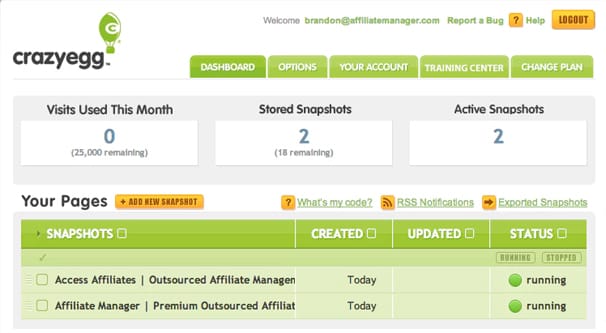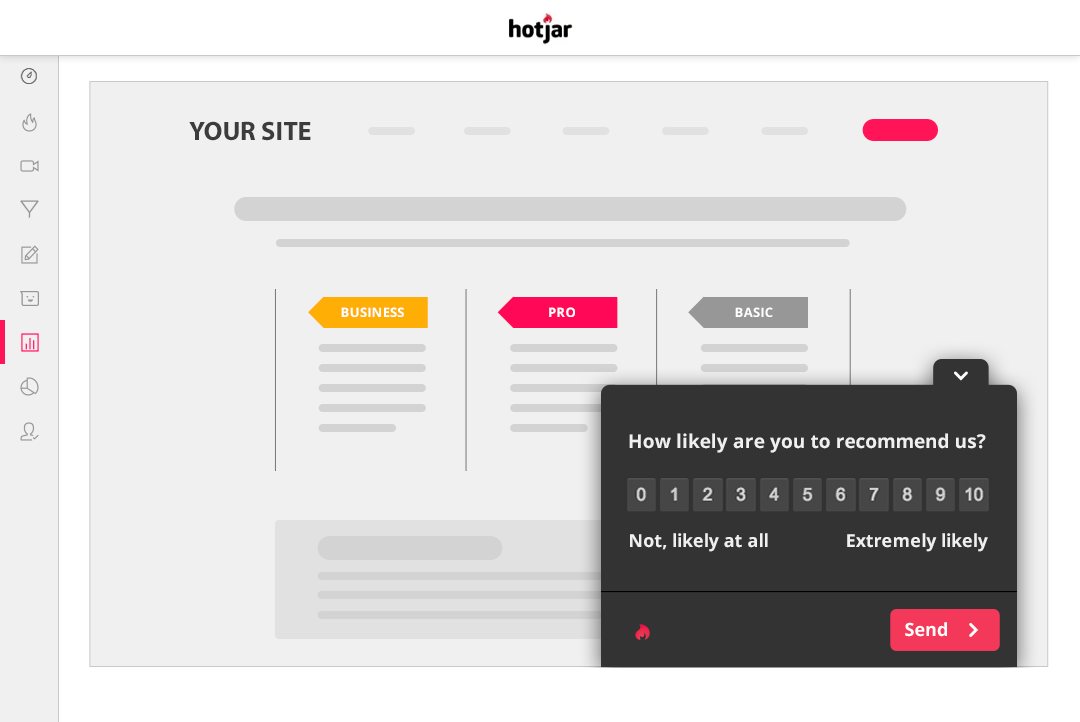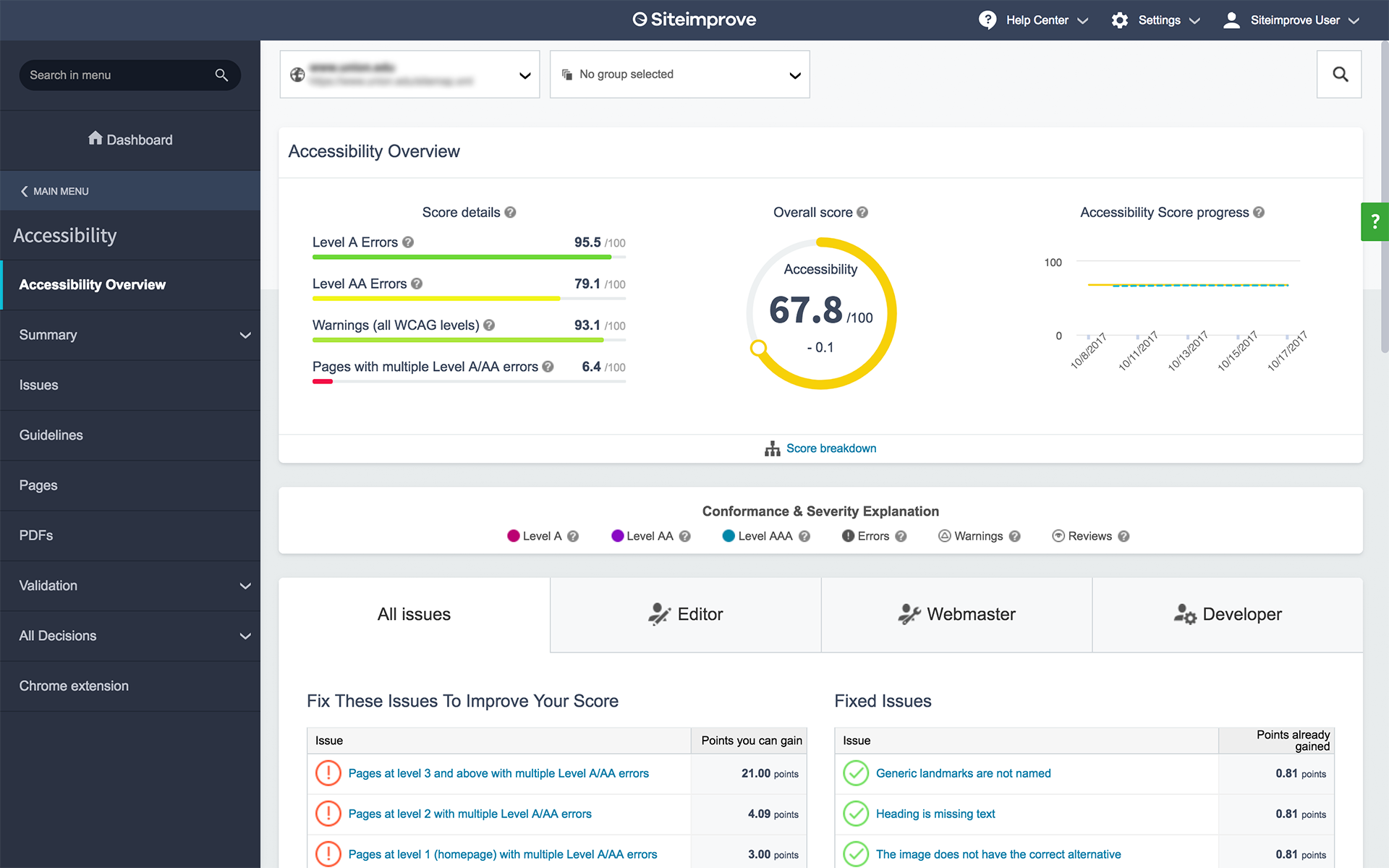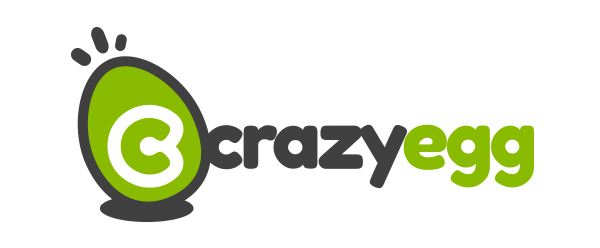Crazy Egg is a prominent online analytics application that is known for its wide range of heat maps. It has clickable heatmaps, heatmaps that follow the movement of the mouse pointer on the web, and displacement heat maps, as well as confetti, its own function.
Crazy Egg allows you to separate the data in a heat map into traffic sources allowing you to observe people from social media, searches, and other sources that feed a website. Place the JavaScript tracker code on the pages you wish to be tracked on your website.
After the code is installed on the sites you’re tracking, CrazyEgg keeps track of your visitors’ activities. The number of clicks on your website will then be displayed in a report generated by your servers. The reports are available on Crazy Egg’s member dashboard. Setting up Crazy Egg appears to be rather simple.
What is Crazy Egg?
Crazy Egg is a website optimization tool that allows small businesses, eCommerce firms, digital agencies, and educational institutions to track visitor behavior across email and ad campaigns. The tool allows teams to study customer journeys, identify diverse audience segments present across websites, and detect issues like unclear navigation and form difficulties. Administrators can use the A/B testing tool to set up particular goals for testing web pages.
Crazy Egg Tool for Testing
Crazy Egg is a great tool for A/B testing since it shows you how users interact with sites and which format is most appealing to them. It enables us to visually examine how people navigate the site depending on the clicks they make and don’t make. It accomplishes this through the use of several forms of heat maps and other similar visual cues, which illustrate how a user interacts with the site and, subsequently, help to improve it.

How to Analyze Clicks with Crazy Egg
Crazy Egg is a web analytics application that gathers data on where visitors click on websites. It generates visual representations of the data that demonstrate how popular or unpopular specific website parts are.
To perform a Crazy Egg test on your website, please follow the instructions below:
1. Listed Down Research Questions
It’s a good idea to make a list of research topics you’d want to study with CrazyEgg before you start using it. Are users interacting with the top navigation, for example? Is the new feature we introduced to the right column being seen (and clicked on) by users? Is anyone scrolling down to the bottom of the page and engaging with the stuff there?
2. Select the pages For Testing
The pages you test will ultimately be determined by your research topics, however as a general guideline, test:
- The main page
- Pages you intend to make changes to in the near future.
This enables you to compare use prior to and following the upgrade:
- Template-specific pages
- Top entry pages or popular pages
- Pages with material that your application wishes to draw attention to
- Pages that might be impacted by particular media attention
- Interactive features, such as calls to action, are included on these pages.
3. Start with three or four pages
Determine the timeframe in which you want Crazy Egg to run. The tests usually last one to two weeks.
NOTE: Request that David installs the code on those pages. David will provide you with the Crazy Egg login credentials so you may view the reports. To guarantee you’re obtaining the most accurate data, try not to make any changes to the website while the test is running. Keep an eye out for high-profile events, like conferences or news stories, that could cause your Web traffic to spike during the time you’re testing.
4. Data analysis and reporting
You can begin data analysis when your exam is completed. Crazy Egg offers a heat map display, a list of click data, and the option to filter the results by the referrer, time to click, and other factors. Based on your research questions, the data you see will enable you to make quick, data-driven design modifications. It may also suggest new questions that you may investigate with the use of other usability techniques like interviews or usability studies.
5. Measure once more
In some circumstances, you may wish to retest your pages after making modifications. To create a new test, follow the steps outlined above.
Best For:
An online analytics tool designed for marketing and product teams that include heatmaps, confetti snapshots, user recordings, A/B test results, engagement analysis, and more.
Price of a Crazy Egg
Let’s have a look at the CrazyEgg monthly plans and prices. The monthly fee for a paid plan is $24. Furthermore, all Crazy Egg plans are invoiced on a yearly basis.
Let’s break down the price of Crazy Egg software:
- $24 per month for the basic plan
- $49 per month for the standard plan
- $99 per month for the Plus package
- $249 per month for the Pro plan
Customer pricing for the enterprise plan There is no free plan available with this tool, however, all options include a 30-day free trial. Also bear in mind that there are Crazy Egg competitors that provide more monthly session recordings for a reduced price. For example, if you have a high-traffic website, the base subscription only offers 100 recordings each month, which won’t give you useful information.
CrazyEgg Alternatives
After reading this review, you might be wondering what else you can do instead of CrazyEgg. As a result, we’d like to recommend a fantastic CrazyEgg option for your analytics needs. CrazyEgg Alternatives offer website owners and digital marketers comparable tools and services:
1. WatchThemLive

Comparable g, WatchThemLive offers similar services. It’s a simple-to-use and simple-to-setup solution for any website. In just a few minutes, you can join up and begin using your session recording and heatmap tools. Session Replays from WatchThemLive are ideal for observing visitor activities, clicks, and engagements.
As a result, you’ll have enough data to develop retargeting and advertising campaigns. Similarly intriguing is WatchThemLive’s Heatmap feature, which allows you to observe which areas of your site generate the most activity. WatchThemLive has a free plan and premium plans that are less expensive than Crazy Egg while providing additional features. With this tool’s free plan, for example, you may capture 5,000 session recordings.
2. Hotjar

Hotjar is a digital marketer’s conversion rate optimization tool. Heat mapping, visual session recording, conversion funnel analytics, form analytics, feedback polls and surveys, and usability testing are some of the features available. Digital analysts, UX designers, web developers,, and product marketers use the tool. Contentsquare purchased Hotjar in September 2021 and it is now a Contentsquare brand.
3. Siteimprove

Siteimprove is a tool for digital analytics and content quality assurance. In terms of digital analytics, Siteimprove incorporates in-page web analytics capabilities like behavior maps and user feedback/surveys, in addition to conversion metrics and site visitor journey tracking. On the content side, Siteimprove provides website performance monitoring, SEO, PDF and webpage scanning for brand policy compliance, and more. Separately, the analytics and content suites can be purchased separately.
Conclusion
Through this post, we looked at CrazyEgg, an online user behavior analytics tool. Based on its features, affordability, and internet reviews, it could be an effective product for small teams. Other solid alternatives to Crazy Egg, such as WatchThemLive, are available. All of these digital marketing tools have their own set of advantages and disadvantages. As a result, they should be examined separately, depending on your specific analytic needs.

